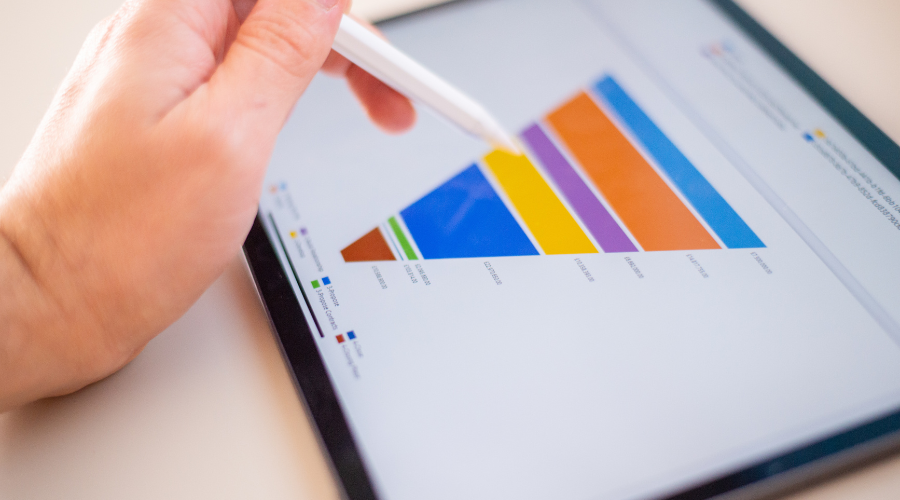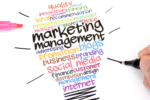What the Digital Marketing Funnel Is and How to Build It
Introduction:
A digital marketing funnel is a strategic framework that maps out the customer journey—from the first spark of awareness to becoming a loyal, repeat customer.
Let’s be honest, digital marketing can feel like a maze. You’ve got SEO, paid ads, social media, email, content, and a dozen other tools at your fingertips. But how do you tie them all together to actually get results? That’s where the digital marketing funnel comes in. It helps you visualize the journey your customers take from the first click to becoming loyal fans—and how you can guide them every step of the way.
So, let’s break down what a digital marketing funnel really is, why it matters, and how to build one that helps turn curious browsers into raving customers.
What Is a Digital Marketing Funnel?
If you’ve ever asked yourself, “what is funnel in digital marketing?“, you’re not alone. Simply put, a digital marketing funnel is a model that represents the steps a person takes to become a customer. It maps out the customer journey—from the moment someone hears about your brand, to when they make a purchase, and ideally, refers you to others.
You can think of it as a guided path. At the top of the funnel, you have a wide net catching people’s attention (think blog posts, social media, or ads). As they move further down, the funnel narrows—focusing on those most likely to convert through nurturing strategies like email marketing, retargeting, or free trials.
So, when someone says “funnel in digital marketing” they’re talking about this entire process.
Why Is the Funnel So Important?
We know it sounds like another buzzword. But knowing the marketing funnel in online marketing is having a map. It makes sure that your marketing activities are not just an assortment of random tweets and promotions, but a linked process with a destination.
Here’s why you should care:
- Better focus: Each stage of the funnel lets you tailor your content, tone, and call-to-action to the customer’s mindset.
- Improved conversions: People are more likely to buy when they feel understood. A funnel lets you meet them where they are.
- More efficient marketing: When you know where customers are dropping off, you can fix leaks and invest your time and budget wisely.
Let’s look deeper into the different digital marketing funnel stages and how to work with them.
Stages of the Digital Marketing Funnel
Even though there are different funnel models out there (some with 3 stages, others with 6 or more), most of them follow this basic structure:
1. Awareness
This is the top of the funnel. Your goal here is to get noticed. People might not know who you are, but they’re discovering a need or problem. You want to show up right when they’re asking, “Hey, is there a better way to do this?”
Content that works here:
- Blog posts optimized for search engines
- Social media campaigns
- Paid search ads
- Influencer partnerships
You’re not selling yet. You’re just offering helpful content that positions you as someone who can help.
2. Interest
Now that they’ve found you, it’s time to get them interested. Maybe they’ve read your blog post or followed you on Instagram. They want more info.
This is where you offer something valuable in exchange for their email address or some other form of engagement.
Content that works here:
- Lead magnets (eBooks, checklists, guides)
- Webinars
- Email signups
- Social proof (reviews, case studies)
3. Consideration
They know you, they like what they see—and now they’re comparing you to your competitors. At this stage, your content should help tip the scale in your favor.
Content that works here:
- Product comparison guides
- Customer testimonials
- Free trials or demos
- FAQs
4. Conversion
This is the decision-making stage. If you’ve done everything right so far, the potential customer is ready to make a move. Make it easy for them.
Tactics that work here:
- Simplified checkout process
- Strong CTAs
- Limited-time offers
- Money-back guarantees
This is where your sales funnel for digital marketing pays off.
5. Retention
The funnel doesn’t stop at conversion. Happy customers are more likely to return—and refer you to others. Retention is all about keeping that relationship alive.
Retention strategies:
- Onboarding emails
- Loyalty programs
- Regular updates and promotions
- Customer service check-ins
6. Advocacy
Now your customer becomes a brand advocate. They leave reviews, share your content, or refer friends. That kind of word-of-mouth marketing? Priceless.
Funnel Meaning in Action: A Simple Example
Let’s say you sell handmade organic skincare products online.
- A potential customer Googles “natural face moisturizers” and finds your blog. (Awareness)
- They download your free guide to clean skincare in exchange for their email. (Interest)
- You send them a series of helpful emails, including testimonials and product comparisons. (Consideration)
- They buy your best-selling moisturizer. (Conversion)
- A week later, they get an email with tips on how to use it and a discount on their next order. (Retention)
- A month later, they tag you in an Instagram post and recommend your product to friends. (Advocacy)
That’s the power of a well-planned funnel.
How to Build a Digital Marketing Funnel That Works
Now that you understand the flow, let’s talk strategy. Here’s how you can start building a funnel that actually delivers results.
Step 1: Know Your Audience Inside and Out
Your funnel won’t work unless you know who you’re talking to. What keeps your audience up at night? What are their goals, challenges, and motivations?
Use tools like:
- Google Analytics
- Social media insights
- Surveys and customer interviews
Tailor your funnel to your audience’s unique journey.
Step 2: Plan Each Stage Intentionally
Don’t wing it. Outline what type of content and strategy you’ll use at each stage of the funnel.
Ask:
- How will I attract leads at the top?
- What will I use to keep them interested?
- How will I move them toward a decision?
Map it out and identify where you need to create or improve content.
Step 3: Use the Right Tools
Automation and tracking tools make a huge difference. Here are a few essentials:
- CRM systems (like HubSpot or Mailchimp)
- Email marketing platforms
- Retargeting ads (Facebook Pixel, Google Ads)
- Analytics tools to monitor performance
These help you manage your funnel without burning out.
Step 4: Nurture Leads with Valuable Content
Lead nurturing is about building trust. If someone isn’t ready to buy today, that’s okay. Stay in their inbox or social feed with helpful, non-pushy content until they are.
Drip campaigns, follow-ups, and personalized messaging go a long way.
Step 5: Track, Test, Improve
Your funnel isn’t a set-it-and-forget-it strategy. Monitor how people move through it and identify where they drop off.
Keep testing:
- Different CTAs
- Landing pages
- Email subject lines
- Ad creatives
Small tweaks can lead to big wins over time.
Real-Life Funnel Uses for Small Businesses
If you’re wondering how all this applies to your business—especially if you’re a startup or solopreneur—here are a few ways funnels are making an impact:
- E-commerce: Drive product discovery through Instagram, retarget non-buyers with Facebook ads, and follow up via email.
- Bloggers: Convert readers into subscribers, nurture them with exclusive content, and promote digital products.
- Local businesses: Use SEO to attract nearby customers, offer discounts for first-time buyers, and follow up with SMS or email offers.
Talking about local, if you’re venturing into digital marketing in Coimbatore, creating a customized funnel that resonates with your market is the key. Local agencies usually know how to mix international best practices with local trends.
Final Thoughts
The digital marketing funnel isn’t a catchphrase-filled chart—it’s a real-world, strategic process for drawing in, converting, and keeping customers. And if it’s done correctly, it doesn’t just boost sales; it creates long-term connections and loyalty to a brand.
If you’re just getting started, don’t worry about having every piece in place right away. Start simple. Pick one stage, improve it, then move on to the next. Over time, you’ll create a system that works for you 24/7—bringing in leads, sales, and repeat customers like clockwork.
Bonus Tip: Don’t forget to revisit your funnel regularly. Trends, technology, and customer expectations change. Your funnel should evolve too. Ready to start building yours?











